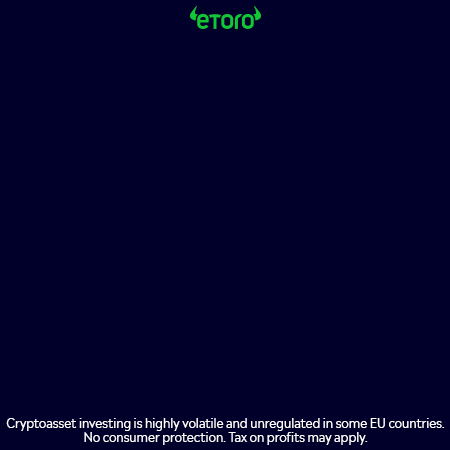Is there trouble in paradise? Ethereum’s team lead, Péter Szilágyi had something to say. The man’s one of the most prominent ETH advocates over at Twitter, but, he was feeling “extremely frustrated” in his latest thread. The protocol’s core developer also used keywords like “overload,” and phrases like “might not be willing/able to do forever.” What was Szilágyi complaining about? Complexity.
Related Reading | Ethereum Closer To Proof Of Stake As Last Testnet Completes The Merge
The Ethereum core developer’s argument started like this:
“Complexity is an often overlooked aspect of a system because usually someone else is paying the price for it, not the person creating it.
But don’t be mistaken, someone *is* paying the price – whether money, time or mental capacity. They might not be willing/able to do forever.”
As with scalability, complexity also keeps trickling unseen up to the breaking point. At that time, it’s already past the point of no return.
Complexity also has the nasty effect of causing cascading failures. Overload people too much, lose capacity, leading to even larger load.
— Péter Szilágyi (karalabe.eth) (@peter_szilagyi) March 18, 2022
Spoiler alert: he’s talking about the developers. They’re the ones paying the price. And they’re speaking through him.
Ethereum Is Approaching The Merge. And Peak Complexity.
Following the laws of dramatic writing, Péter Szilágyi first paints a picture. “In Ethereum’s history, complexity never decreased. Every EIP is piling on top. Every major change (1559, merge, sharding, verkle, stateless, L2, etc) is one more nail.” Then, he drops the hammer and explains the… complexity of the situation:
“As good as it feels that we’re approaching The Merge, I must emphasize that Ethereum is not going in a clean direction. Tangentially it’s achieving results, but it’s also piling complexity like there’s no tomorrow.
If the protocol doesn’t get slimmer, it’s not going to make it.”
I feel the root cause is the disconnect between the research and the dev teams. The former has to “only” dream up elegant – standalone – ideas.
The latter needs to juggle every single idea that was ever introduced, whilst surgically expanding the dimensionality of the space.
— Péter Szilágyi (karalabe.eth) (@peter_szilagyi) March 18, 2022
As a refresher course, their official site defines The Merge as the moment, “the current Ethereum Mainnet will “merge” with the beacon chain proof-of-stake system.” It’s that mythical moment when the protocol will switch from Proof-Of-Work to Proof-Of-Stake. Sometimes it feels like Ethereum will never arrive to that crucial turning point.
ETH price chart for 03/19/2022 on FTX | Source: ETH/USD on TradingView.com
Szilágyi Issues A Warning
Even though the core developer signs the message personally, this might be a more widespread problem. This might be an Ethereum-developers-as-a-whole problem. What was Szilágyi complaining about? Complexity.
“There have been engineering attempts to reduce the complexity (module split in Erigon, responsibility split in The Merge). Yet there was never an attempt to reduce the protocol complexity.
We are already past the point of anyone having a full picture of the system.”
This all sounds concerning for the protocol’s holders and supporters, but nothing in the thread sounds more like a threat than Szilágyi’s last sentence. “There are less and less people knowing and willing to piece together a broken network. And each change pushes more away.” He sure sounds like he’s speaking on the developer’s behalf.
I can’t say what the solution is, but my 2c is to stop adding features and start culling, even at the expense of breaking things.
There are less and less people knowing and willing to piece together a broken network. And each change pushes more away. /FIN pic.twitter.com/uOLce9wB7B
— Péter Szilágyi (karalabe.eth) (@peter_szilagyi) March 18, 2022
The meme Szilágyi uses at the end is also revelatory. And borderline threatening.
The Other Side Of Ethereum
As this thread was going live, in what seems like another universe, Time Magazine crowned Vitalik Buterin as the “Prince of Crypto.” Also, the Ethereum creator’s cover art is part of a “historic NFT” drop, and the issue is being promoted as something special. In that contrasting story’s article, Bitcoinist said:
“In that sense, he expressed concern about the dominance of decentralized finances (DeFi) and NFTs and the “shameless displays of wealth” driven by collections such as Bored Ape Yacht Club. The inventor of Ethereum also worries about the rise in transaction fees, and “overeager investors”.
Buterin believes Ethereum will host a larger revolution beyond “monkeys”, and into the most important aspect of people’s lives.”
So, even though there might be dissent among the ranks, the Ethereum army marches on. With corporate media’s backing, no less. On the other hand, it’s interesting to see one of the protocol’s main defenders raise the complexity issue. That point is central in the bitcoiners’ criticism of Ethereum. Does all that complexity belong in Layer One of a blockchain?
Related Reading | Ethereum’s ConsenSys Closes $450M Round And Announces Major Changes To MetaMask
At the same time, this story is just a tiny part of the overarching story that is The Merge. Is it as close as Péter Szilágyi says? Is it as certain as he implies? Or, is his thread a bad sign? We will know soon enough. Will Ethereum accomplish the impossible? Stay tuned to find out.
Featured Image by John Barkiple on Unsplash | Charts by TradingView








